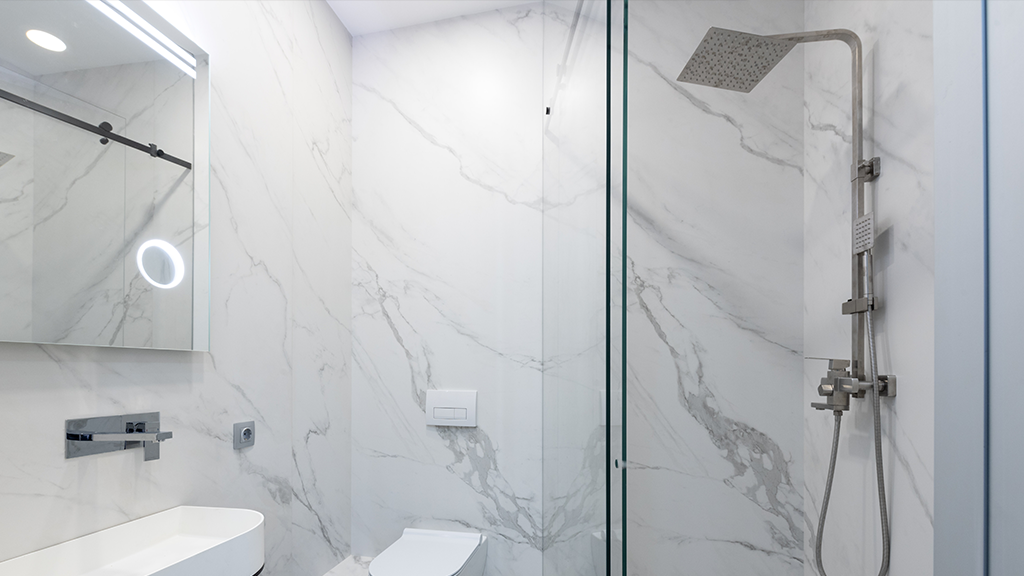
If you’re considering some bathroom renovations or looking at bathroom styles for your new house, you may have come across frameless glass shower enclosures. You’d notice from the examples that there’s a 6mm brace panel that sits at the top of the shower, fixed between the side light and the return panel. In this article, I’m going to explain the benefits of using a brace, when they’re installed, and whether or not you need one.
The braces usually consist of 6 or 10-mm toughened safety glass. They’re approximately 100mm wide and run the full width of the shower. They’re silicone on top of the sidelights, the wall, and the return panel if required.
Benefits of Shower Brace in Frameless Showers
Shower braces have numerous benefits including:
- Providing support to all the glass panels.
- Make your shower rigid, i.e., keep the panels in place, so there’s no unstable movement.
- Reducing the risk of accidents.
When to Install
You can install the shower without the shower brace and add them later on if needed. However, for larger showers, it’s advisable to install them when the shower is installed.
Do You Need One?
In short, If you’re getting a frameless shower and you don’t want any movement in the glass panes, then yes you do. The braces provide much-needed support to restrict the movement of the glass panels.
Alternatives to Shower Brace
Another common method is to use a glass corner shelf that doubles as a glass shower brace. You can install this into the corner of the shower, where it’s glued along the tiled wall, and against the return panel, thus disguised as a glass shelf rather than a shower brace.
These aren’t as effective as the full gusset panel that runs a full width, and it really depends on the depth of that return panel, in determining how effective they are, but this is also another great option.
For more information, feel free to download our free guide, or get in touch.
